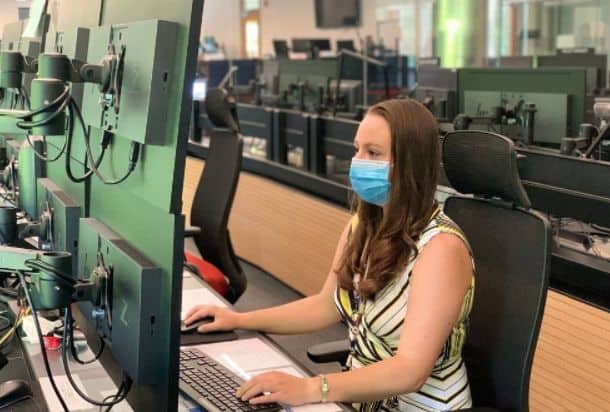The James Webb Space Telescope has successfully passed new tests, during which experts simulated a communication session with a telescope in space. Engineers successfully transferred commands to the observatory to turn on and check the operation of scientific instruments and then received data from it, according to the NASA website.
The James Webb Space Telescope will continue observations initiated by Hubble and Spitzer. Being in a halo orbit around the second point of Lagrange in the Sun-Earth system, the Observatory will conduct observations in the infrared range and search for distant galaxies, existing in the era of Reionization, as well as quasars, to explore the processes of star formation, the formation of planetary systems and atmosphere of already known exoplanets, as well as to study clusters of stars and galaxies. To perform these tasks, the telescope is equipped with a main composite mirror, measuring 6.5 meters, which is five times larger in area than the main Hubble mirror, in addition, it has a five-layer protective screen to reduce heat interference.
The telescope was originally scheduled to launch into space in 2007, but the launch date was repeatedly postponed, and it was not until mid-2019 that the observatory’s assembly was completed. The last time the launch was postponed to October 31, 2021, due to the pandemic coronavirus. To date, James Webb has passed a number of tests, which have already confirmed the correctness of the deployment of the protective screen, the main mirror and the telescope’s support tower, its flight configuration, and completed the first of the final integrated (acoustic, vibration and electric) tests.
On August 24, 2020, NASA announced that James Webb, now in the cleanroom of Northrop Grumman Space Systems in California, had successfully passed a new test called the “Ground Segment Test“. During the tests, a communication session with a telescope in space was simulated. Specialists from the Mission Operation Center at the Space Telescope Science Institute in Baltimore compiled and transmitted commands to the observatory to turn on and check the operation of scientific instruments using the NASA Deep Space Communication Network emulator, and then successfully received the necessary data from the telescope. Now the telescope has to pass the final acoustic and sine-vibration tests, after which it will be transferred to the flight configuration center.
